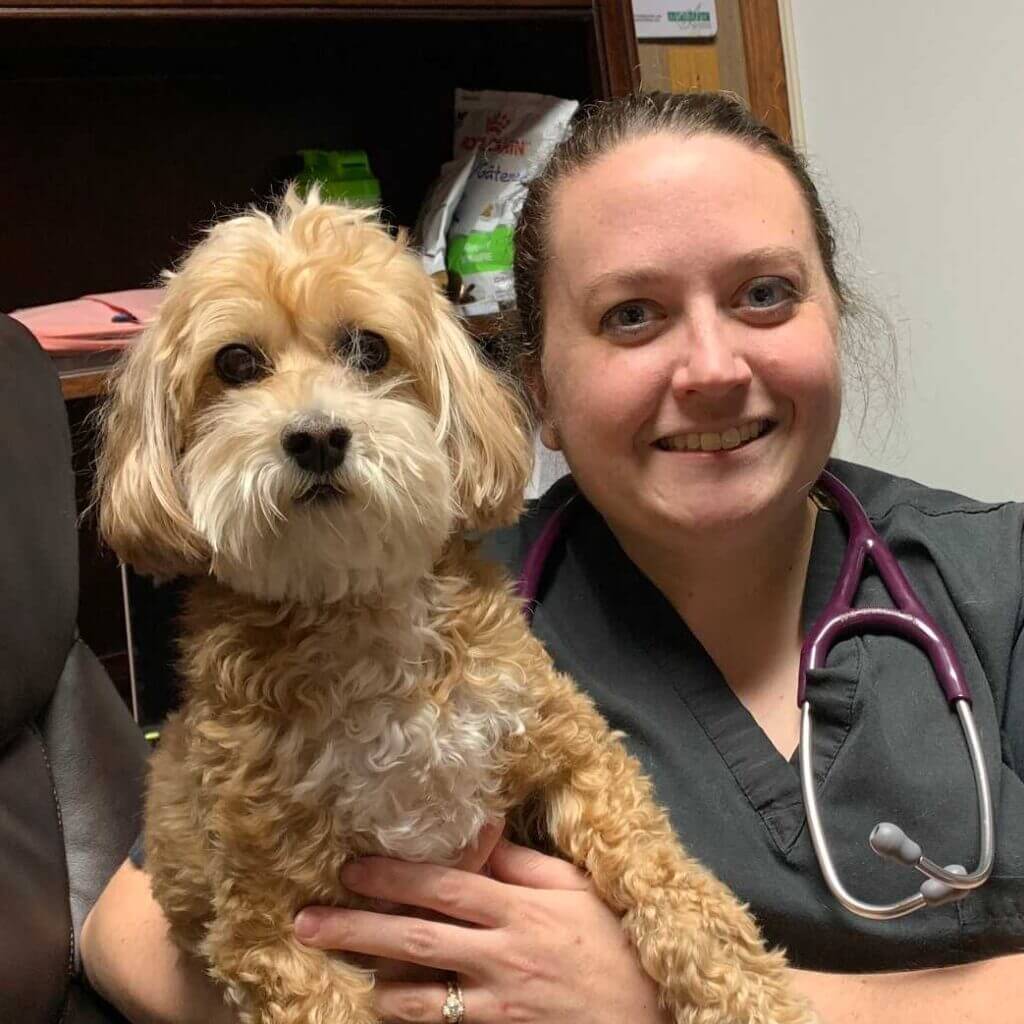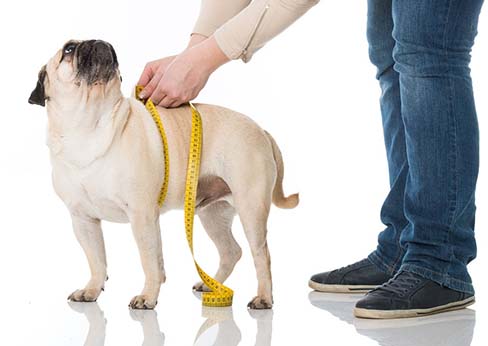In this post:
- How do you tell if a dog or a cat is overweight?
- How to help your dog or cat lose weight?
- How much food to feed a dog?
- How to manage your dog’s or cat’s weight?
Please note: Information in this post is not meant as a substitute for veterinary care. Always consult your veterinarian if you suspect that your dog is sick.
Did your vet tell you that your pet is overweight? Have you been noticing that they have been a little heavier lately? There are many different factors that play into knowing if your pet is overweight and there are many different things that you can do to help them lose weight.
How do you tell if a dog or a cat is overweight?
One of the things that most veterinarians are asked, “is my dog or my cat overweight?” In the end, there are many things that you must look at when you are looking at a dog or a cat to really determine if they are over or underweight.
Most vets like to fell along with your dogs or cat’s spine. They are feeling for little tiny bony processes that extend upwards from the spine. If you can feel these processes, your pet is in decent body condition. Other places to look are at the points of the hips here to see if it’s nice and fleshy or if there is some sort of fat deposit here.
Another great place to feel is the rib cage. If you move across the ribs, you should easily be able to feel across each rib. You should not have to push to feel each rib and you should not be able to count their ribs without touching your pet.
- How to tell if your dog is underweight?
When you feel along your pet’s ribs and there is a distinct indentation and you can see the ribs from afar, your pet is underweight. You can also look at their legs, face and backbone. If you notice that these areas are very thin, then your pet is a little bit underweight and you potentially need to start feeding them more food.
- How to tell if your dog is a perfect weight?
If your dog is at the perfect weight you will be able to feel their ribs but not see them. You will also notice a nice tucked abdomen and there will not be fat pockets stored all over their body.
- How do you tell if your dog is overweight?
You will notice extra fat deposits on their hips and abdomen. You will not be able to easily feel your dog’s ribs. They will usually have a very bloated abdomen and no waist line.
Other areas to look at to see if your dog is overweight?
Another area you need to look at your pet is the waistline. You want to make sure that when you’re looking at the ribs and then coming back here, they have a nice hourglass shape. Even when you’re looking at your pet from above you should be able to see how you have the ribs, which are going to be a little bit wider, and then it comes back in here towards the waist.
A common area on dogs where they pack on any pounds is right over here over the hips. If you start to see that things are pooching out a little bit, that’s an indication that your pet is probably overweight.
Another area in both cats and dogs that they can pick up the pounds are over the hips here by the base of the tail and the bottom of her belly. You will want to make sure that your pet, whether we’re talking about a cat or a dog, has come in from the ribs, a nice little upswing here to the belly. Sometimes especially on cats, you’ll see that they’ll have some excess skin hanging down. If that’s the case, what you can do is you can feel within that skin. If you feel anything that’s squishy and if you feel a lot of stuff that’s kind of squishy, that also is another indication that that’s probably excess fat that your pet is carrying around.
How to help your dog or cat lose weight?
Most veterinarians will very often find that a dog or cat is overweight. That’s when you have to start to take some action and work with your veterinarian on developing a nice plan so that you can have slow productive weight loss over time. you surely don’t want to have a crash diet situation, which can be detrimental to your pet.
Things that you can do are to write down exactly what you’re currently feeding. Including:
- the specific food,
- manufacturer,
- flavor type,
- canned versus dry.
All that information will be very helpful to your veterinarian. The other thing you want to do is record:
- any treats,
- any table food,
- any chewable supplements;
- all of those things contain calories and need to be accounted for as well.
How to manage your dog’s or cat’s weight?
Your veterinarian certainly can help you discern what the ideal weight for your pet should be and different ways to go about making sure that they are getting adequate nutrition.
You can do follow four steps to help keep your dog’s weight healthy:
- Avoid feeding table scraps
- Monitor the amount of food you feed your pet
- Limit treats to 10% of their daily intake
- Engage in plenty of exercises
Exercise Will Help Your Dog Lose Weight
Exercise is a crucial component in ensuring pet health and well-being. Regular exercise also strengthens your bond with your pet. A few examples of ways to keep your pet active and engaged include:
Dog Exercises:
- Basic obedience training
- Teaching your dog to swim
- Playing hide and seek to engage the brain
- Running, walking or biking with your dog
- Engaging in dog sports, like chasing a flying disk, tracking, and agility challenges.
Cat Exercises:
- Setting up a cat tower with small treats to encourage climbing and playing
- Keeping plenty of household toys around to encourage play
- Using a laser pointer or wand-style toy for interactive exercises
- Tempting your cat with hidden treats in a toy for batting and knocking practice
How many Calories does my Dog or Cat need each day?
The calories cats and dogs need to consume daily to maintain their weight is far less than what people need. Healthy adult people generally should consume 2,000-2,500 calories per day. In comparison, according to the standard formula used to calculate the daily caloric needs of pets, an average 50-pound, the adult neutered dog typically needs just under 1,000 calories daily. An average 10-pound, an adult neutered cat needs around 220 calories each day.
Final Thoughts
While overweight dogs and cats may be cute, there are many health problems that your dog or cat can develop due to being overweight. The extra weight can put extra strain on your joints or even cause organs not to function properly. Being overweight can even lead to diabetes. By feeding a high-quality food and monitoring your dog’s food and treat intake, your dog can be fit and live a long and happy life.
Special thanks to:
Pet Food Institute
The Pet Food Institute and its members are committed to helping dogs and cats live long and healthy lives. They advocate for legislation, regulations, and technologies that support the domestic manufacture and global distribution of safe, quality pet food and that provide for consumer choice
Patrick Miles, DVM
Patrick Miles, DVM is owner and veterinarian at Priceless Pet Clinic in Normandy Park WA. He has worked in emergency medicine since graduating from veterinary school and spent seven years at Animal Critical Care and Emergency Services.





